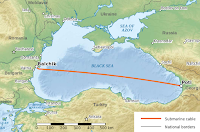Zayo announced its selection by a leading cloud storage provider to provide metro dark fiber and wavelengths services. The solution will leverage existing network from prior success-based capital projects, including new segments with committed tenants, which are currently under construction. The customer name was not disclosed, nor were financial terms.
Zayo said it is providing this cloud service provider with a three node ring in the Dallas metro area to connect its data centers. The wavelengths solution will provide eight 100G routes, creating a ring between the Bay Area, Seattle, Chicago and Dallas. The solution will provide a diverse ring in the western U.S. and double the customer’s network capacity.

“Zayo is ideally positioned to meet to the infrastructure needs of web-scale companies,” said Max Clauson, executive vice president of Network Connectivity Services at Zayo. “By leveraging our fiber networks in multiple cities and fiber routes between cities, and by incorporating our product portfolio of dark fiber solutions and lit services, we were able to provide a streamlined, efficient solution for the customer.”
http://www.zayo.com
Zayo said it is providing this cloud service provider with a three node ring in the Dallas metro area to connect its data centers. The wavelengths solution will provide eight 100G routes, creating a ring between the Bay Area, Seattle, Chicago and Dallas. The solution will provide a diverse ring in the western U.S. and double the customer’s network capacity.

“Zayo is ideally positioned to meet to the infrastructure needs of web-scale companies,” said Max Clauson, executive vice president of Network Connectivity Services at Zayo. “By leveraging our fiber networks in multiple cities and fiber routes between cities, and by incorporating our product portfolio of dark fiber solutions and lit services, we were able to provide a streamlined, efficient solution for the customer.”
http://www.zayo.com















